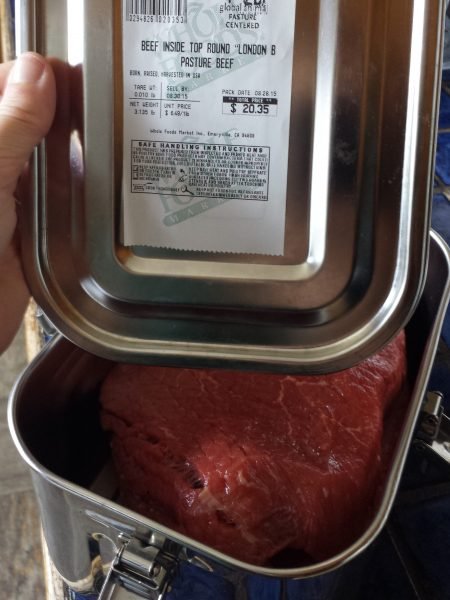The Ultimate Guide: How To Store Raw Meat In Freezer
Looking for the best way to store raw meat in your freezer? Look no further! We’ve got you covered with simple and effective tips to ensure your meat stays fresh and safe for future use. Properly storing raw meat is essential for both taste and safety reasons, and with our easy-to-follow guidelines, you’ll never have to worry about spoiled or freezer-burned meat again. So, let’s dive right in and learn how to store raw meat in the freezer to maintain its quality and maximize its shelf life. Don’t let your meat go to waste – follow these steps to keep it fresh and ready for your next delicious meal.
How to Store Raw Meat in Freezer
Properly storing raw meat in the freezer is essential for maintaining its quality, flavor, and safety. By following the right techniques and guidelines, you can ensure that your meat stays fresh, avoids freezer burn, and remains safe to consume. In this comprehensive guide, we will explore the best practices for storing raw meat in the freezer, including preparation, packaging, labeling, and organizing. Let’s dive in!
1. Preparing Raw Meat for Freezing
Before you store raw meat in the freezer, it’s crucial to prepare it appropriately. This step ensures that the meat remains safe and maintains its quality throughout its time in the freezer. Here’s what you need to do:
A. Trim Excess Fat
Remove any excessive fat from the meat as it can affect the texture and taste during freezing. Trim the visible fat using a sharp knife and discard it.
B. Portioning
Divide larger cuts of meat into smaller portions based on your anticipated usage. This helps in avoiding unnecessary thawing and refreezing of the entire batch.
C. Seasoning
If you wish to marinate the meat before freezing, do it beforehand. Marinating after freezing can lead to inconsistent flavor and texture.
2. Packaging Raw Meat for Freezing
Proper packaging is vital for preventing freezer burn, which occurs when air comes into contact with the meat. To ensure the quality and longevity of your stored meat, consider the following packaging methods:
A. Vacuum Sealing
Invest in a vacuum sealer to remove excess air from the packaging. This method significantly reduces the risk of freezer burn and helps maintain the meat’s taste and texture.
B. Freezer Safe Bags
If a vacuum sealer is not available, use high-quality freezer-safe plastic bags. Squeeze out as much air as possible before sealing them.
C. Aluminum Foil
Wrap the meat tightly in aluminum foil, ensuring all sides are completely covered. This method provides a protective barrier against freezer burn.
3. Labeling and Dating
To keep track of your frozen meat and maintain proper rotation, labeling and dating each package is crucial. Follow these guidelines:
A. Labeling
Using an adhesive label or a permanent marker, clearly identify the type of meat and the date of freezing on each package.
B. First In, First Out (FIFO)
Arrange the labeled packages in a way that makes it easy to retrieve the oldest ones first. This practice helps prevent the meat from being stored for an extended period, which can affect quality.
4. Organizing the Freezer
A well-organized freezer not only makes it easier to find what you need but also helps maintain the quality of stored meat. Consider the following tips:
A. Categorize by Type
Dedicate separate areas or shelves for different types of meat, such as poultry, beef, pork, or seafood. This separation prevents cross-contamination.
B. Arrange by Date
Within each category, organize the meat packages based on the freezing date. Always prioritize using the oldest packages first.
C. Temperature Consistency
Keep the freezer temperature consistent at or below 0°F (-18°C) to ensure optimal preservation of the meat.
5. Expiration Period for Frozen Meat
While frozen meat can remain safe indefinitely, it is best to consume it within a certain time frame to maintain quality. Here are some general guidelines:
A. Ground Meat
Ground meat, such as beef or poultry, is safe to consume within 3 to 4 months of freezing.
B. Whole Cuts
Whole cuts of meat, like steaks or roasts, can be safely consumed within 6 to 12 months of freezing.
C. Poultry
Chicken and turkey can maintain their quality for up to 9 to 12 months when properly stored in the freezer.
6. Thawing Frozen Meat
When it comes to thawing frozen meat, it’s essential to do it safely and maintain its quality throughout the process. Follow these recommendations:
A. Refrigerator Thawing
The best method for thawing frozen meat is by transferring it from the freezer to the refrigerator. Place the wrapped meat on a plate or tray to catch any drips, and allow it to thaw gradually.
B. Cold Water Thawing
If you need to thaw meat quickly, submerge the sealed package in cold water. Change the water every 30 minutes to ensure it remains cold.
C. Microwave Thawing
Using the defrost setting on your microwave can also be an option for quick thawing. However, be cautious as this method can result in uneven thawing.
7. Re-freezing Thawed Meat
Once you have thawed the meat, it is generally safe to re-freeze it. However, it’s important to note that the quality may deteriorate with each thawing cycle. It is advisable to cook the thawed meat before refreezing it to ensure optimal taste and texture.
8. Safety Precautions
Maintaining safety when handling raw meat is crucial to avoid foodborne illnesses. Take the following precautions:
A. Proper Hygiene
Always wash your hands thoroughly with soap and water before and after handling raw meat. Additionally, sanitize all utensils, cutting boards, and surfaces that come into contact with raw meat.
B. Separate Storage
Store raw meat away from other foods to avoid cross-contamination. This includes both in the freezer and refrigerator.
C. Safe Defrosting
Avoid thawing meat at room temperature as it promotes bacterial growth. Stick to safe thawing methods like refrigerator thawing or cold water thawing.
Storing raw meat in the freezer properly is a simple yet crucial task to ensure the safety and quality of your food. By following these guidelines, you can confidently freeze and store meat without worrying about compromises in taste or safety. Enjoy the convenience and benefits of having a well-stocked freezer filled with delicious meat options whenever you need them. Stay safe, and happy freezing!
Frequently Asked Questions
How should I store raw meat in the freezer?
It is important to properly store raw meat in the freezer to maintain its quality and prevent foodborne illnesses. Follow these steps:
Should I wrap raw meat before storing it in the freezer?
Yes, it is recommended to wrap raw meat securely to prevent freezer burn and cross-contamination. Use airtight freezer-safe packaging or wrap it tightly in freezer-grade plastic wrap.
Can I freeze raw meat directly in its original packaging?
While some meats come packaged in freezer-safe materials, it is generally best to transfer the meat to airtight freezer bags or wrap it in freezer-grade plastic wrap. This provides an extra layer of protection against freezer burn.
How long can I store raw meat in the freezer?
The storage time varies depending on the type of meat. In general, poultry can be stored in the freezer for up to nine months, while beef, pork, and lamb can be stored for six to twelve months. It’s important to label the packages with the date to keep track of storage times.
Where should I place raw meat in the freezer?
Store raw meat in the coldest part of the freezer, usually at the back or bottom. This ensures that it remains at a consistently cold temperature and minimizes the risk of bacteria growth.
Is it safe to refreeze raw meat that has been thawed?
Refreezing raw meat that has been thawed is generally not recommended, as it can affect the quality and safety. However, if the meat was thawed in the refrigerator and remains cold to the touch, it can be refrozen. It is always best to cook thawed meat before refreezing to maintain its quality.
What are some additional tips for storing raw meat in the freezer?
Ensure that the freezer temperature is set to 0°F (-18°C) or below. Avoid overpacking the freezer, as proper airflow is important for maintaining consistently cold temperatures. Lastly, remember to practice proper hygiene and handling procedures when storing raw meat to minimize the risk of cross-contamination.
Final Thoughts
In conclusion, properly storing raw meat in the freezer is crucial to maintain its quality and ensure food safety. To store raw meat in the freezer, it is important to package it in airtight containers or freezer bags to prevent freezer burn and contamination. Labeling the packages with the date of freezing also helps in keeping track of the freshness. Additionally, placing the meat on a lower shelf or in a separate drawer can prevent cross-contamination with other foods. By following these guidelines, you can safely store raw meat in the freezer and maintain its quality for future use.

